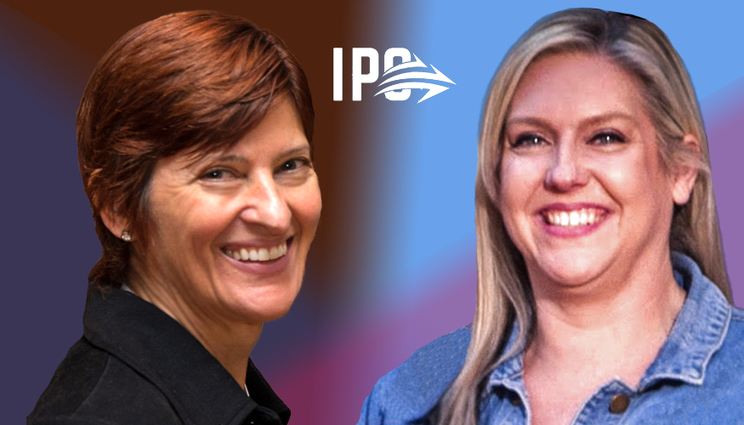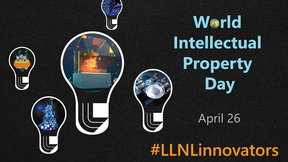Innovation and Partnerships Office employees capture two national awards
 (Download Image)
(Download Image)
From left: Annemarie Meike, a business development executive within the Innovation and Partnerships Office, received the Innovative Lab Technology Transfer award for her work with the Lab’s three-dimensional-printing feedstock inks. Mary Holden-Sanchez, a digital assets coordinator within IPO, won a “Best in Class” licensing award for her work with LLNL’s Numerical Electromagnetic Code Antenna Modeling Software.
The Department of Energy’s (DOE) Technology Transfer Working Group (TTWG) recently awarded two Lawrence Livermore National Laboratory (LLNL) employees with “Best in Class” awards during their May 13 spring meeting in Washington, D.C.
Annemarie Meike, a business development executive within the Innovation and Partnerships Office (IPO), received the Innovative Lab Technology Transfer award for her work with the Lab’s three-dimensional-printing feedstock inks.
These inks enable next-generation, high-performance, three-dimensional-printed devices for energy storage, catalysis, filtration, sensors and other applications by meeting the flow conditions needed for three-dimensional printing while maintaining and improving the functional properties of the original material.
The commercialization of these inks presented a challenge because of a gap in suitable partners in both the three-dimensional printing and the materials supply chains. The collaboration with Millipore Sigma substantially increases the number of researchers and thus the number of applications for the direct ink write inks in commercial products.
In addition, Millipore Sigma regularly solicits feedback from researchers, which it supplies to LLNL for possible ink augmentations.
To meet this challenge, a Technology Commercialization Fund CRADA and special license terms were established with Millipore Sigma, a global science and technology company, that enabled the partnership to collaborate on shelf-life, packaging, quality assurance, as well as placing the inks in Millipore Sigma’s customer catalogues.
Millipore Sigma provides research quantities of materials and has a worldwide customer base of researchers at companies and universities and is the perfect small-scale step toward large scale commercialization by companies for their specific products. Researchers and potential commercialization partners can purchase small amounts of inks from Millipore Sigma for testing and evaluation. LLNL and Millipore Sigma are now seeking to increase the variety of LLNL’s functional inks that will be offered in the Millipore Sigma catalog.
Mary Holden-Sanchez, a digital assets coordinator within IPO, won a “Best in Class” licensing award for her work with LLNL’s Numerical Electromagnetic Code (NEC) Antenna Modeling Software.
NEC was originally developed to provide a more accurate method for modeling antennas on naval vessels and became a game-changer for antenna mapping. Once publicly released, NEC was instantly adopted by amateur and professional antenna designers. Commercially, it paved a path toward modern day cellular, Wi-Fi, and satellite connectivity.
To date, Holden-Sanchez has executed nearly 600 license agreements for NEC with commercial entities, individuals and government institutions from around the world. NEC remains the most licensed technology in LLNL’s software portfolio.
NEC versions 4 and 5 continue to be licensed, yielding a continual revenue source for LLNL under Holden-Sanchez’s direction.
Contact
 Stephen Wampler
Stephen Wampler
[email protected]
(925) 423-3107
Related Links
Lab Innovation and Partnerships OfficeDepartment of Energy’s Technology Transfer Working Group
Tags
Economic ImpactIndustry Collaborations
Technology Transfer
Science
Featured Articles







